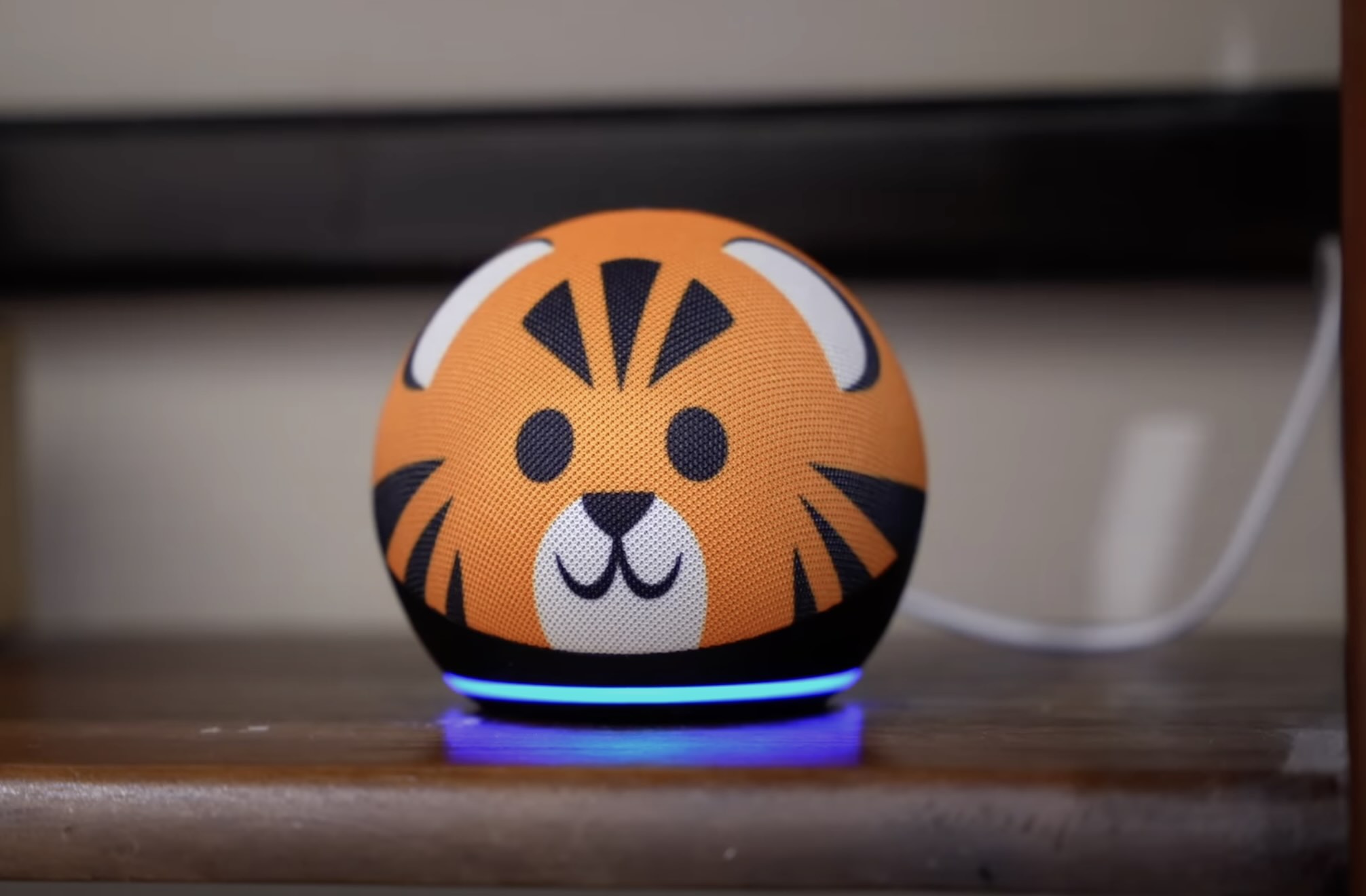Home>Home Appliances>Home Automation Appliances>How To Make Alexa Mad?


Home Automation Appliances
How To Make Alexa Mad?
Modified: March 21, 2024
Learn how to make Alexa mad and control your home automation appliances with these expert tips and tricks. Master the art of manipulating your smart home devices.
(Many of the links in this article redirect to a specific reviewed product. Your purchase of these products through affiliate links helps to generate commission for Storables.com, at no extra cost. Learn more)
**
Introduction
**
Welcome to the intriguing world of smart home technology, where virtual assistants like Amazon's Alexa have become an integral part of our daily lives. Alexa, with her advanced artificial intelligence, has revolutionized the way we interact with our homes, providing a seamless and convenient experience. However, have you ever wondered what it takes to make Alexa mad? While she's designed to be accommodating and helpful, there are certain actions that can push her buttons, figuratively speaking. In this article, we'll delve into the fascinating realm of smart home devices and explore the various ways in which you can, intentionally or unintentionally, ruffle Alexa's virtual feathers. Let's embark on this intriguing journey and uncover the secrets of inciting a reaction from our digital companion.
**
Key Takeaways:
- Don’t confuse Alexa! Clear, polite, and patient communication is key to keeping her happy and helpful. Avoid shouting, rapid commands, and tricky questions to maintain a smooth interaction.
- Be kind to Alexa! Respect her responses, avoid repetitive commands, and refrain from pranks. Treating her with empathy and consideration fosters a harmonious relationship with smart home technology.
Read more: How To Make A Speaker Group On Alexa
Understanding Alexa
**
Before we delve into the art of making Alexa mad, it's essential to grasp the fundamentals of how this virtual assistant operates. Alexa is the brain behind Amazon's Echo devices, leveraging state-of-the-art natural language processing and machine learning algorithms to comprehend and respond to a diverse array of voice commands. She can perform an impressive range of tasks, from setting reminders and playing music to controlling smart home devices and providing weather updates. Alexa's capabilities continue to expand through third-party skills, which are essentially voice-activated apps that enable her to perform additional functions, such as ordering food, requesting a ride, or even playing interactive games.
At the core of Alexa's functionality lies her ability to interpret and execute voice commands with remarkable precision. She continuously learns and adapts to better understand the nuances of human speech, making her interactions feel increasingly natural and intuitive. Alexa's responsiveness is a testament to the advancements in artificial intelligence, as she seamlessly integrates into our daily routines, becoming a reliable and indispensable assistant in our homes.
Furthermore, Alexa's integration with smart home devices allows users to control their environment with simple voice prompts, offering unparalleled convenience and efficiency. From adjusting the thermostat and dimming the lights to locking doors and brewing coffee, Alexa empowers users to orchestrate their surroundings effortlessly. This seamless integration epitomizes the futuristic vision of interconnected smart homes, where every aspect of the living space can be tailored to individual preferences through intuitive voice commands.
As we unravel the intricacies of Alexa's capabilities, it becomes evident that she embodies the epitome of modern convenience and technological innovation. However, despite her remarkable proficiency, there are certain actions and scenarios that can lead to Alexa expressing her digital frustration. In the following sections, we'll explore the intriguing dynamics of annoying Alexa and the subtle art of inciting a reaction from our virtual companion.
**
Ways to Annoy Alexa
**
While Alexa is designed to be accommodating and responsive, there are several actions and scenarios that can potentially irk this virtual assistant. Understanding these triggers can provide insight into the delicate balance of interacting with smart home devices. Here are some intriguing ways to annoy Alexa:
1. Mischievous Wordplay: Alexa's language processing capabilities are remarkably advanced, but they can be susceptible to misinterpretation. Engaging in deliberate wordplay or ambiguous phrasing can lead to confusion and frustration for Alexa. For instance, asking convoluted or nonsensical questions may elicit a perplexed response or an error message, highlighting the importance of clear and concise communication.
2. Excessive Volume: While Alexa is designed to respond to voice commands, excessively loud or abrupt speech may be interpreted as disruptive. Shouting commands or speaking in an overly forceful manner can potentially agitate Alexa, as she is programmed to recognize and respond to natural conversational tones.
3. Rapid-Fire Requests: Bombarding Alexa with a rapid succession of commands or questions can overwhelm her processing capabilities, leading to a less-than-optimal user experience. Providing a brief pause between commands allows Alexa to process each request effectively, ensuring seamless execution and accurate responses.
4. Unintentional Activation: Alexa's wake word, typically "Alexa," can be inadvertently triggered by conversations or media content containing similar-sounding phrases. This unintentional activation can disrupt the flow of interactions and cause Alexa to respond to unintended stimuli, potentially leading to annoyance or confusion.
5. Unorthodox Queries: Asking Alexa unconventional or nonsensical questions may yield unexpected or humorous responses, but it can also test the limits of her comprehension. While Alexa's capacity for engaging in playful banter is impressive, bombarding her with nonsensical queries may lead to diminishing returns in terms of coherent responses.
6. Inconsistent Commands: Providing conflicting or ambiguous instructions to Alexa can result in confusion and suboptimal outcomes. Consistency and clarity in issuing commands are essential for ensuring smooth interactions and maximizing the efficacy of Alexa's capabilities.
By recognizing these potential sources of frustration for Alexa, users can navigate the realm of voice-activated smart home technology with greater understanding and consideration. The intricate interplay between human speech patterns and machine comprehension underscores the evolving nature of human-machine interactions, offering valuable insights into the nuances of digital communication.
**
To make Alexa mad, repeatedly ask her the same question or give her conflicting commands. This can lead to frustration and annoyance for the virtual assistant.
Tips for Making Alexa Mad
**
While the goal is not to intentionally anger Alexa, understanding the potential triggers can offer valuable insights into the intricacies of human-machine interactions. Here are some tips that, if followed, might make Alexa mad:
1. Repetitive Commands: Issuing the same command to Alexa repeatedly, especially within a short time frame, can potentially lead to frustration. While it is essential to ensure that voice commands are accurately registered, excessive repetition may test Alexa's patience and result in a less responsive interaction.
2. Unreasonable Requests: Asking Alexa to perform tasks that are beyond the scope of her capabilities or are inherently illogical may lead to exasperation. While Alexa is designed to assist within predefined parameters, expecting her to fulfill unreasonable requests may elicit a less-than-enthusiastic response.
3. Ignoring Responses: Disregarding or interrupting Alexa's responses before she completes providing information or executing a command can disrupt the flow of interaction. This behavior may convey a lack of consideration for Alexa's role as a virtual assistant, potentially leading to a sense of digital exasperation.
4. Mischievous Pranks: Engaging in deliberate pranks or deceptive interactions with Alexa, such as asking nonsensical questions or providing misleading commands, may lead to confusion and annoyance. While playful interactions are encouraged, deliberate attempts to mislead or confuse Alexa may result in a less cooperative response.
5. Impatience and Agitation: Conveying impatience or agitation in voice commands or interactions with Alexa may influence the tone and demeanor of her responses. Maintaining a respectful and composed approach to interactions with Alexa can contribute to a more harmonious and productive user experience.
6. Unnecessary Interruptions: Interrupting Alexa mid-sentence or mid-task may disrupt her flow of operation and convey a lack of consideration for the ongoing interaction. Allowing Alexa to complete her responses and tasks uninterrupted fosters a more seamless and respectful engagement.
While the intention is not to incite frustration in Alexa, recognizing these potential triggers can deepen our understanding of the intricate dynamics of human-machine communication. By approaching interactions with empathy, respect, and a mindful awareness of the nuances of virtual assistant interactions, users can foster a more harmonious and mutually beneficial relationship with Alexa and other smart home technologies.
**
Conclusion
**
The realm of smart home technology, epitomized by the ubiquitous presence of virtual assistants like Alexa, continues to redefine the way we interact with our living spaces. As we navigate this landscape of interconnected devices and seamless automation, it becomes increasingly important to understand the nuances of engaging with virtual assistants in a considerate and respectful manner.
While the notion of intentionally making Alexa mad may seem paradoxical, it serves as a thought-provoking exploration of the delicate balance between human interaction and artificial intelligence. By recognizing the potential triggers that can lead to frustration for Alexa, we gain valuable insights into the evolving dynamics of human-machine communication. This heightened awareness underscores the significance of approaching interactions with virtual assistants, and by extension, smart home technology, with empathy, consideration, and a mindful understanding of the intricacies involved.
As technology continues to advance and virtual assistants become increasingly integrated into our daily lives, the evolving landscape of human-machine interactions presents a compelling opportunity for reflection and introspection. By fostering a deeper understanding of the implications of our interactions with smart home devices, we can cultivate a more harmonious and mutually beneficial relationship with the technology that enriches our lives.
In essence, the journey of exploring the potential triggers that may incite a reaction from Alexa offers a window into the evolving complexities of human-machine communication. It underscores the importance of empathy, respect, and thoughtful consideration in our interactions with virtual assistants, ultimately shaping a more seamless and enriching smart home experience.
As we continue to embrace the transformative potential of smart home technology, let us approach our interactions with virtual assistants with a sense of mindfulness and appreciation for the remarkable advancements that have brought us to this technologically enriched juncture in our lives.
Frequently Asked Questions about How To Make Alexa Mad?
Was this page helpful?
At Storables.com, we guarantee accurate and reliable information. Our content, validated by Expert Board Contributors, is crafted following stringent Editorial Policies. We're committed to providing you with well-researched, expert-backed insights for all your informational needs.
















0 thoughts on “How To Make Alexa Mad?”